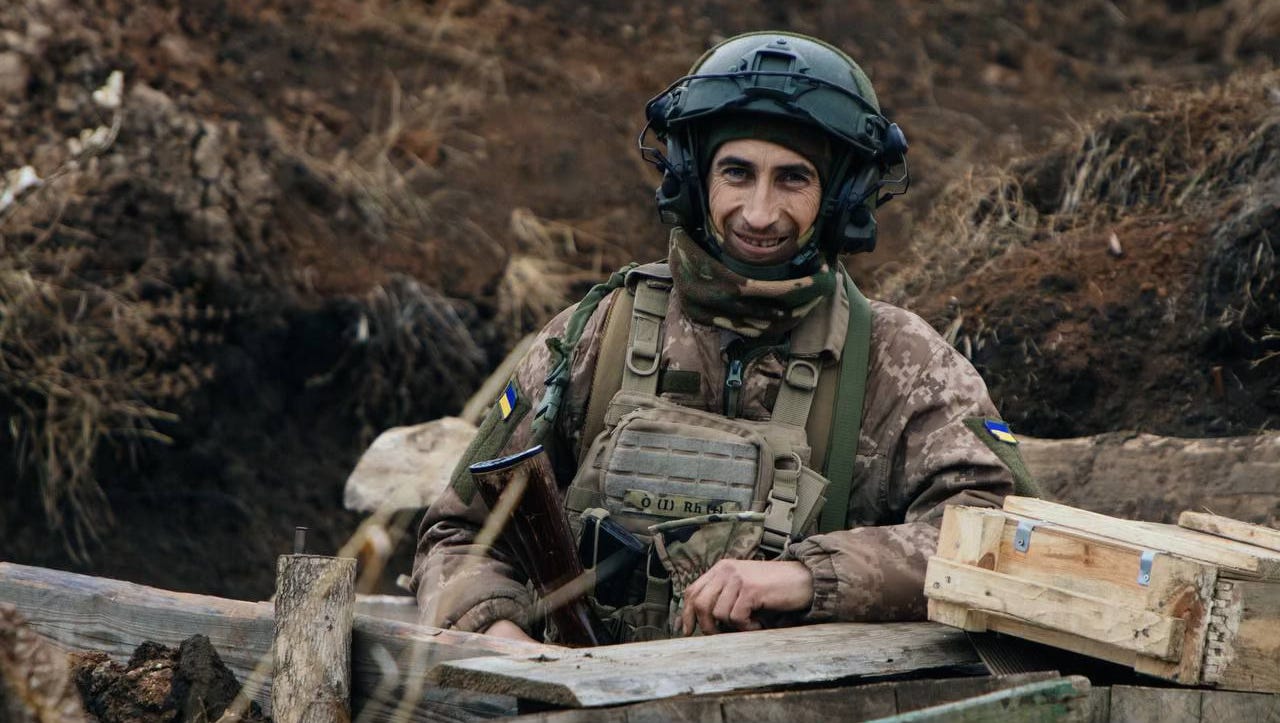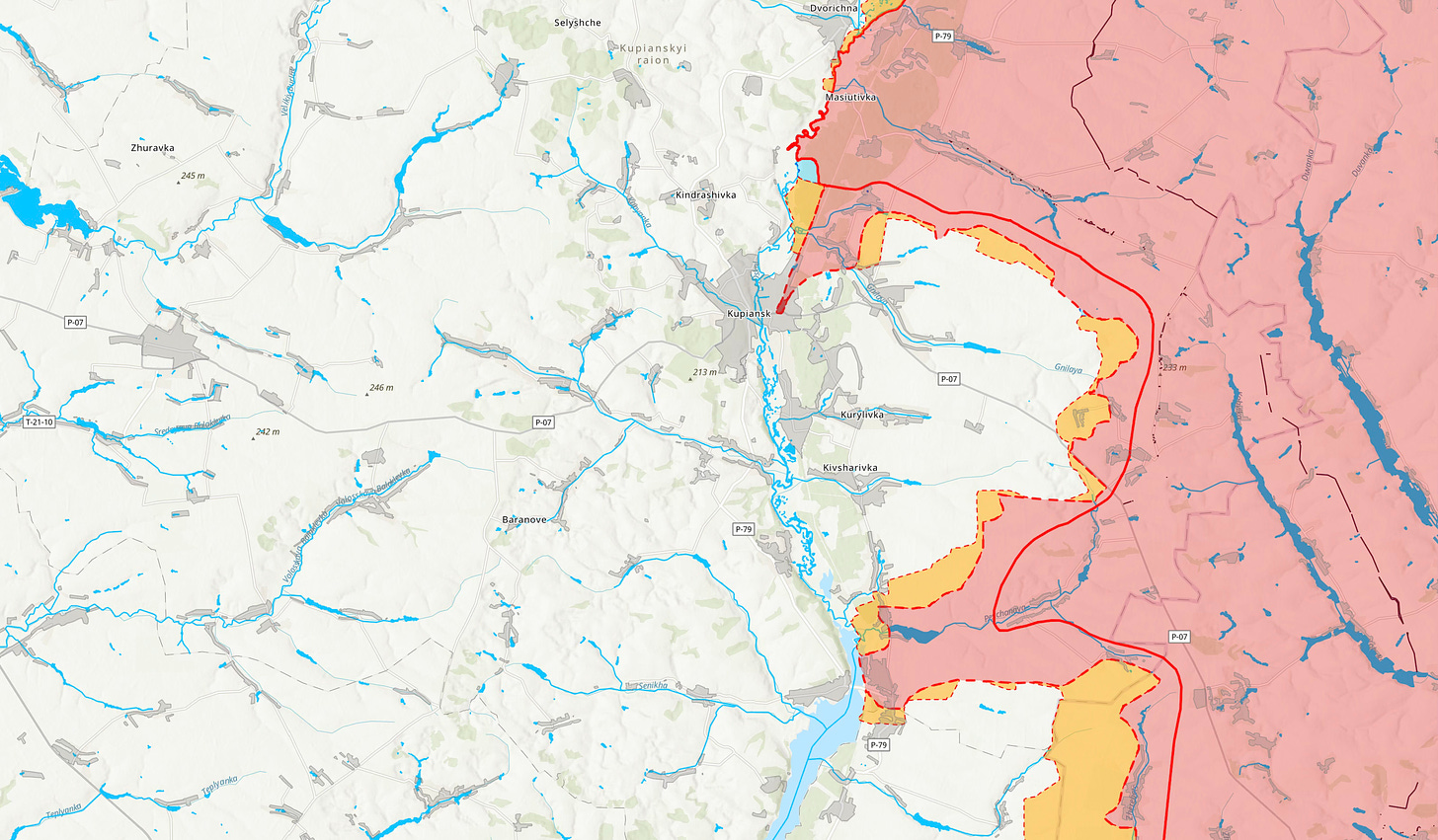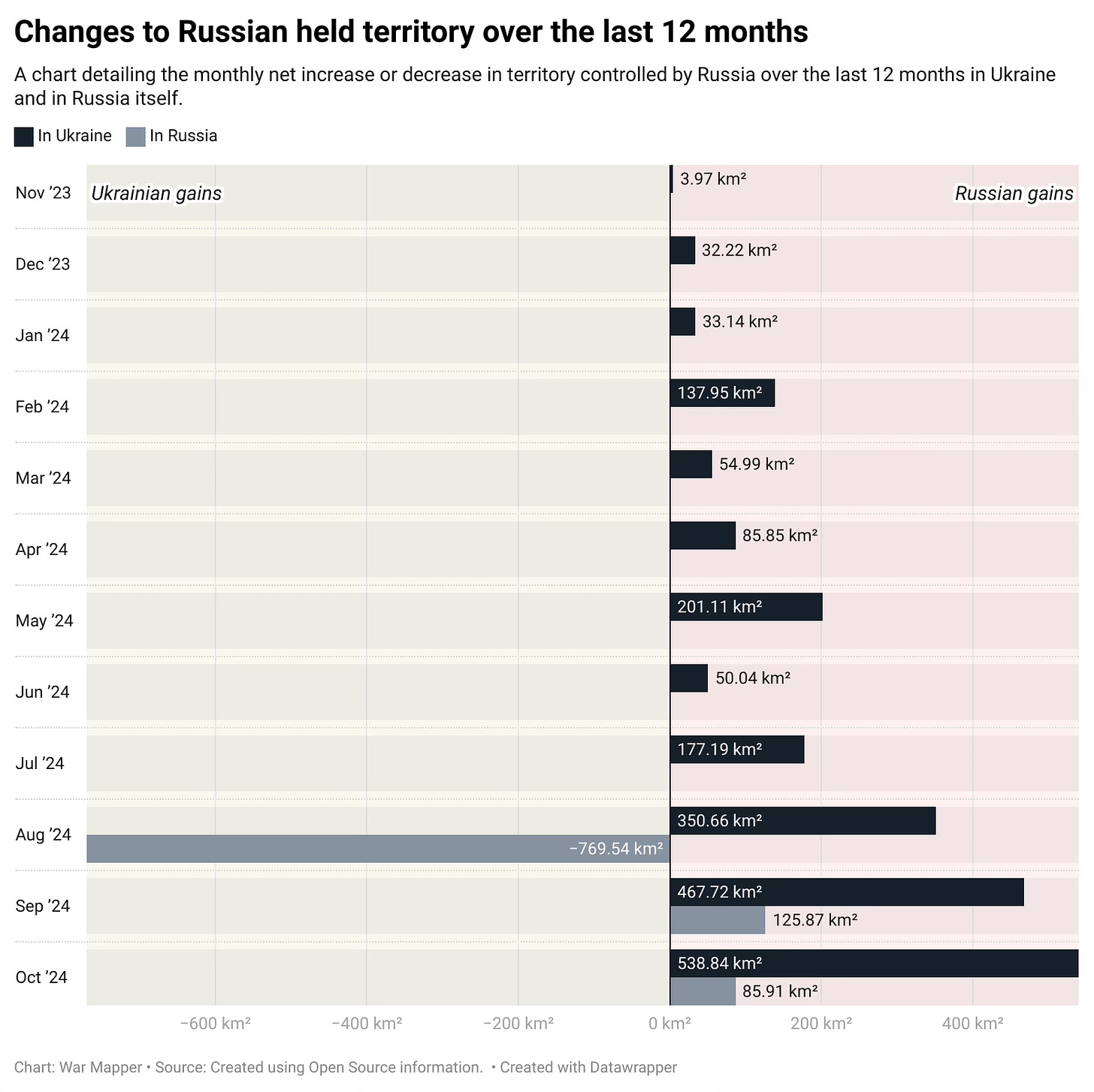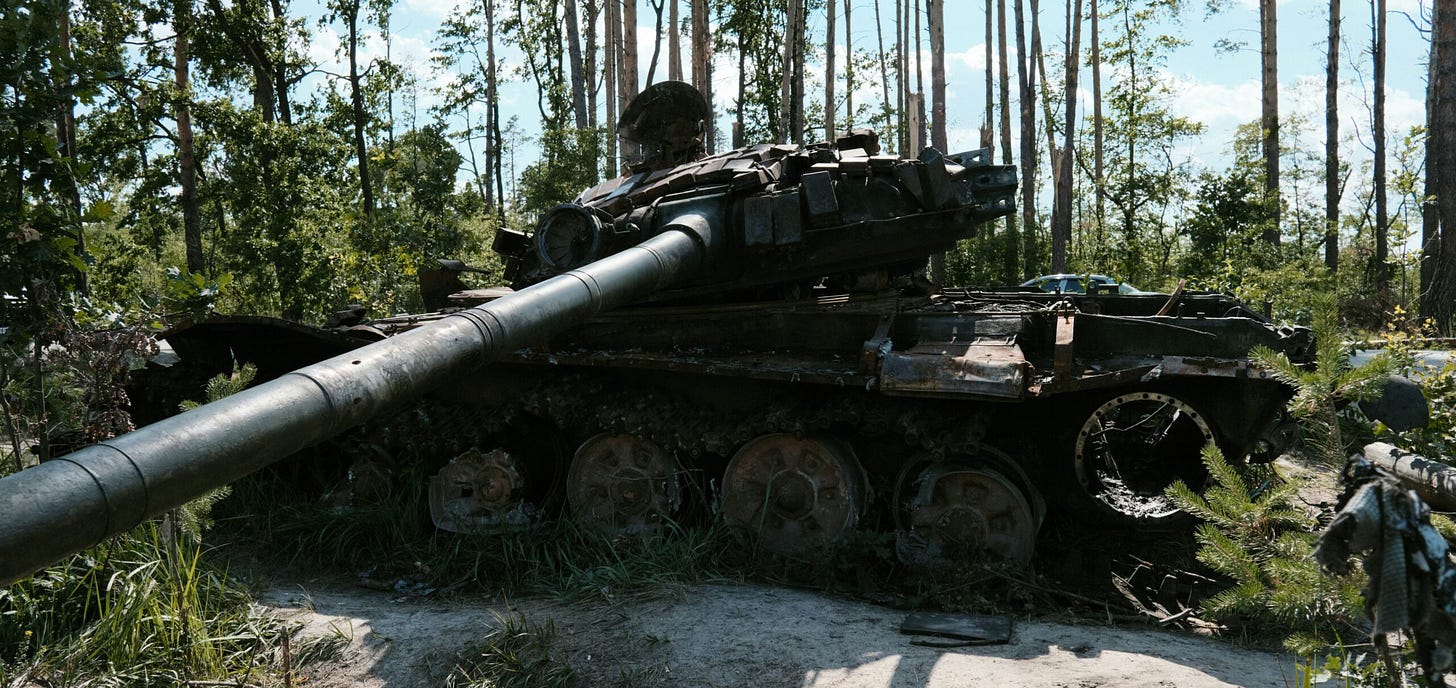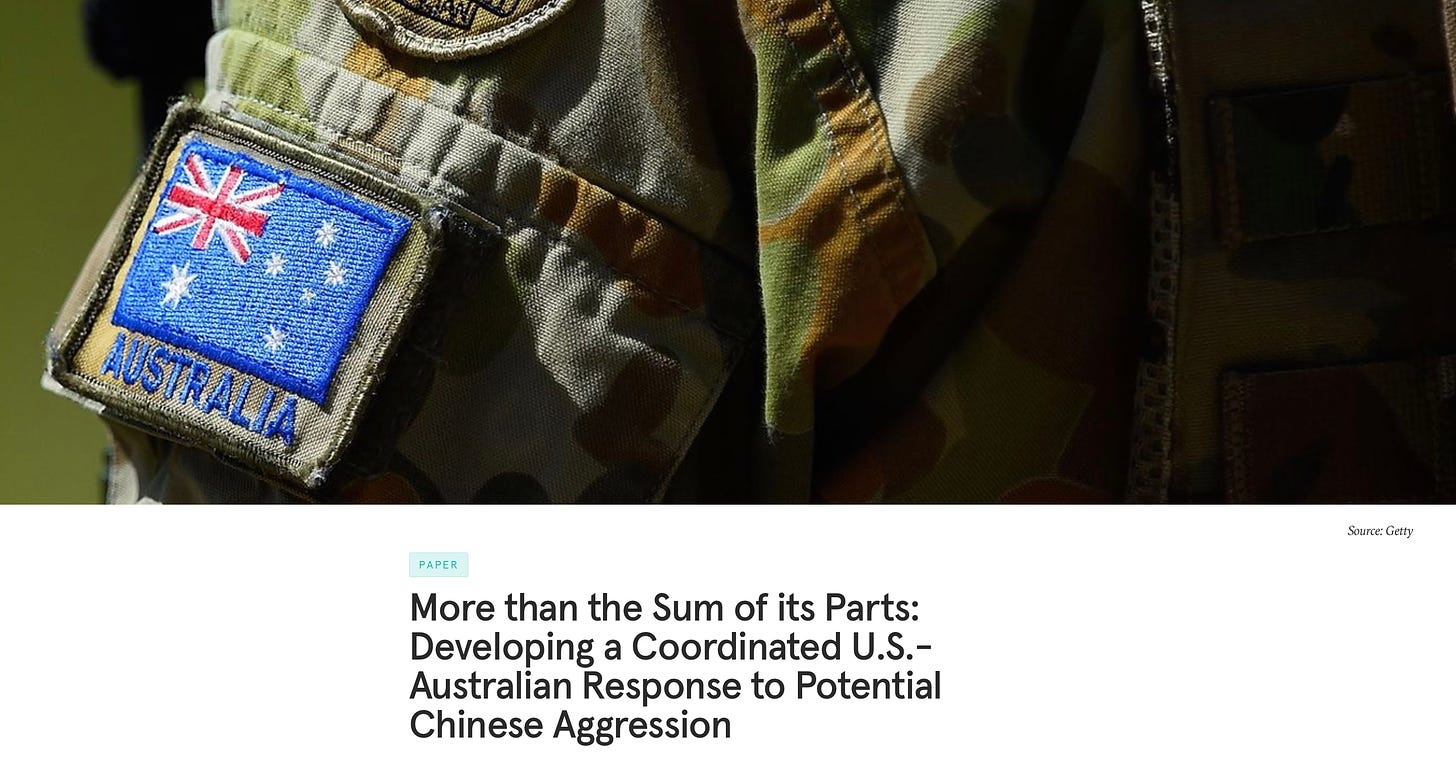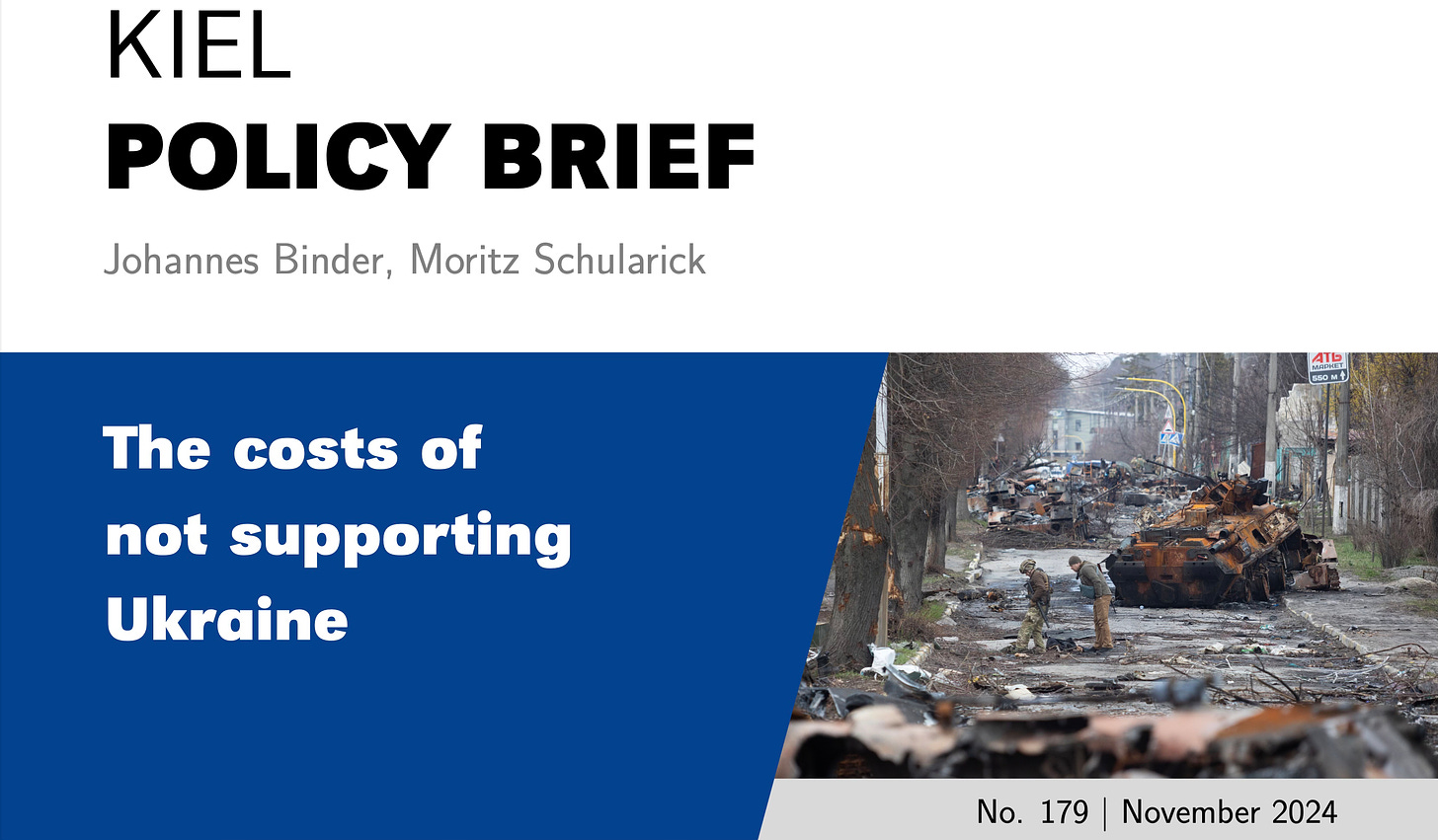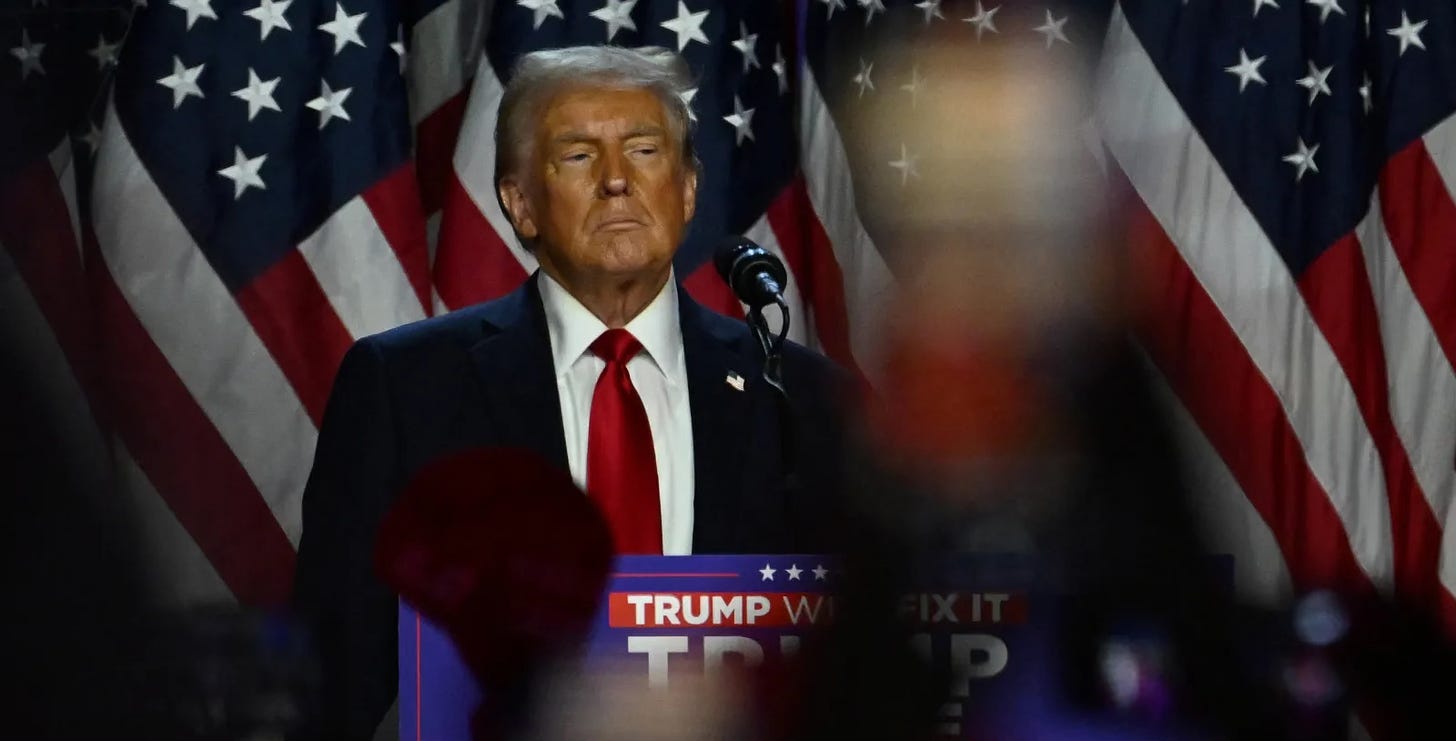The Big Five - 16 November edition
My regular update on conflict and confrontation in Ukraine, the Middle East and the Pacific, accompanied by recommended readings on modern war and future conflict.
There is an old Chinese saying: strangle the chicken and frighten the monkey. In essence, if you wish to shape the behaviour of a big competitor, attack and destroy a small ally of that competitor. Unfortunately, U.S. and NATO ‘strategy’ for Ukraine in the past three years, their strategic impatience, and inclination to rush into negotiations with Russia means that the West instead has ‘fed the chicken and encouraged the monkey’.
As is every week these days, it was a fascinating week in war and international affairs. In this week’s update, I will focus mainly on the war in Ukraine but also provide an update on affairs in the Pacific as well.
Ukraine
The war in Ukraine and Russia continues to centre on two main campaigns - Kursk and the Donbas. However, more recently the Russians have begun an offensive in southern Ukraine and small raids into Kharkiv.
The Campaign in Kursk. This week the Ukrainians continued to inflict significant casualties on Russian attacking forces in Kursk. But the overall trend in this campaign is favourable to the Russians (and their North Korean allies). They have retaken about a quarter of the territory Ukraine seized in its August offensive. And while Ukraine has recently been able to retake a small amount of territory, the overall trend here is one of the Russians slowly grinding out advances in a manner similar to their eastern offensive over the past year.
With large numbers of glide bombs and drones, EW and drones, and the evolving use of meat tactics, the Russians have developed a viable tactical and operational method which they will apply in Kursk.
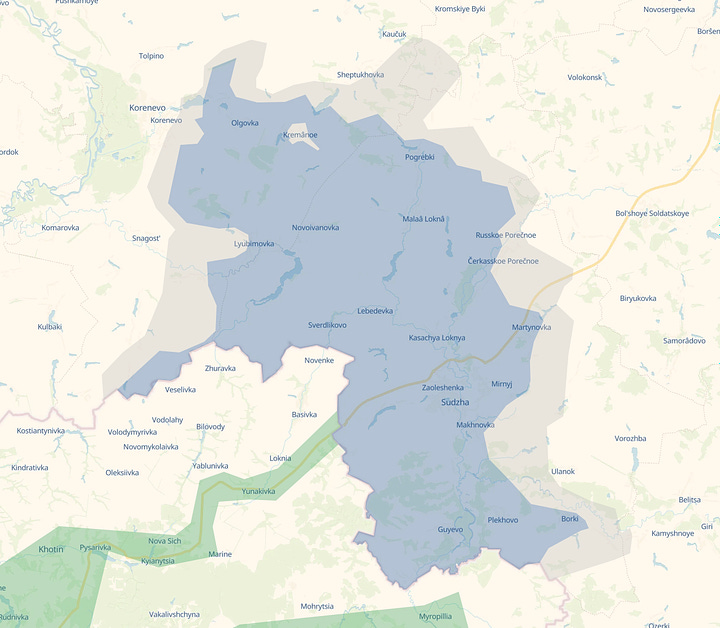
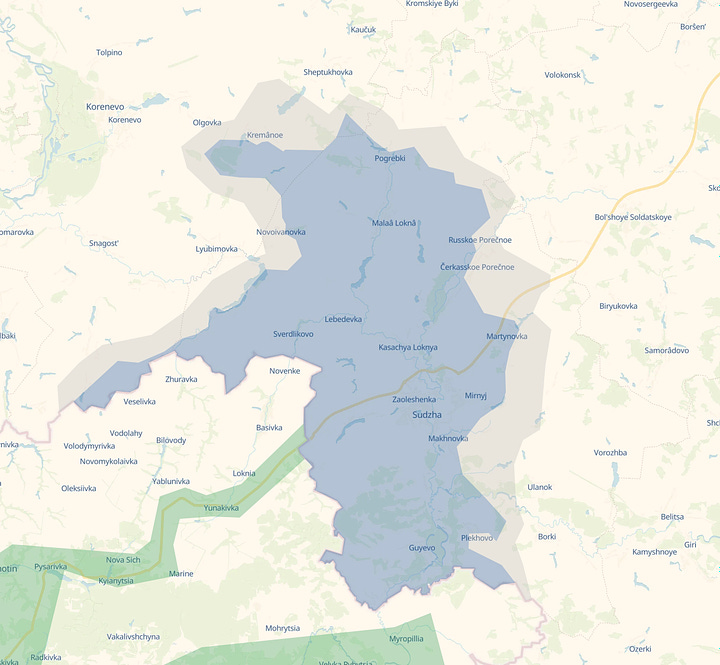
With a force of around 50,000 Russians and North Koreans assembled there, with who nows how many North Koreans to follows, the Russians may be able to sustain a longer counter offensive here than the Ukrainians can sustain a defence of their ground given their manpower shortages and other pressures in the Donbas.
The Donbas Campaign. Unfortunately, the news from eastern Ukraine continues to be grim. While no major Russian operational breakthrough is expected, the Russians have been able sustain their pressure on the Ukrainians for about a year now and it is telling. The Russian gains in territory has accelerated as their eastern offensive has continued. And while they continue to take massive casualties, now over 1500 per day, they have also continued to learn and adapt their tactics and campaign (which is also explored in one of my Big Five recommended articles this week).
The Russian eastern offensive rolls on and it has advanced in areas south of Pokrovsk. Indeed, it has recently accelerated its gains in this area. Russia has also made gains on its Vuhledar axis of advance, taking control of several towns.
Russian forces are also consolidating along the Oskil River. The Russians are slowly clearly north and south from the territory it holds on the eastern bank of the Oskil. and is pushing both north and south of its positions on the east bank.
Russian forces made further advances into the city of Kupyansk as part of their offensive operations along the Kupyansk-Svatove-Kreminna line. Kupyansk is a major rail hub with five different lines intersecting in the town. Occpuied by the Russians in February 2022, it was subsequently liberated by Ukraine in their September 2022 offensive. Now, the Russians are back.
Russian Missile Attacks. Russia has sustained its campaign to destroy Ukrainian civilian infrastructure and terrorise Ukrainian civilians through drone and missile attacks. Over the past couple of weeks, targets in Odesa, Kherson, Zaporizhzhia, Dnipropetrovsk, Sumy and Kyiv have been attacked. Large attacks took place on 13 November (96 Russian missiles and drones launched), 11 November (76 Russian missiles and drones launched), and 10 November (145 Russian missiles and drones launched).
Overall, the number of Russian drone and missile attacks have increased in the past three months compared to the same period last year (see graphs below from CSIS Russian Strike Tracker). Just as the Russians are throwing as many people as possible into battle to seize territory in the lead up to a Trump inauguration, they appear to be doing the same in the drone and missile war.
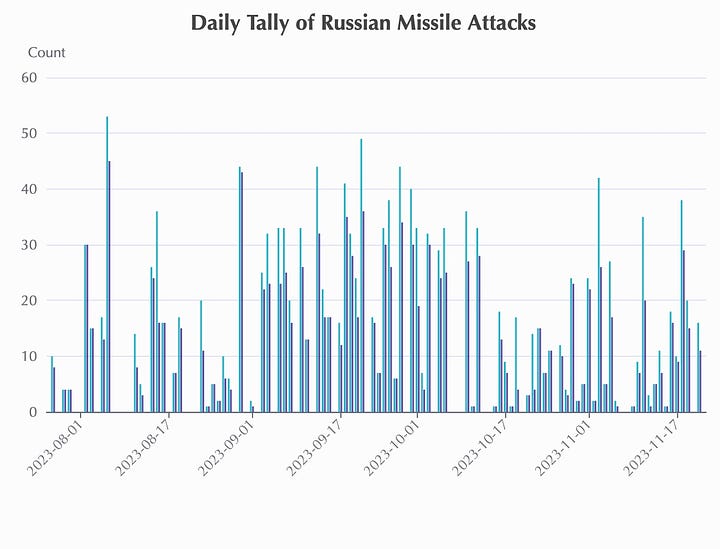
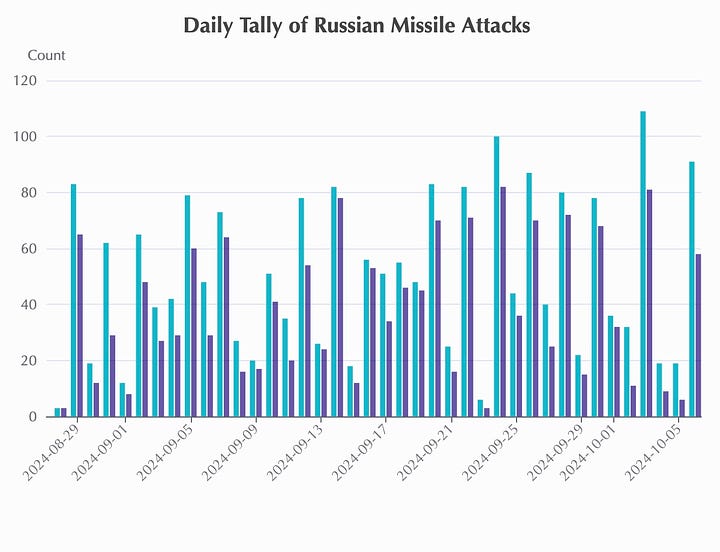
The Putin-Scholz Call. This week, it has emerged that the German chancellor, Olaf Scholz, has spoken with Vladimir Putin about ending the war in Ukraine. While apparently Scholz informed Putin that he had not achieved his overall goal for the war - the subjugation of Ukraine - in the past three years, that is unlikely to have any influence on the Russian leaders strategic calculus. He has been ‘successful enough’ to convince Western leaders to seek a ceasefire around current territorial holdings.
As the New York Times has reported, “Mr. Putin told his German counterpart that any peace deal in Ukraine must be based on new territorial realities and, most importantly, address the root causes of the conflict.” This is very unsubtle code for Putin keeping all the territory he already has, and keeping Ukraine out of NATO, as the likely start point from Russia for any negotiation.
Putin has the measure of his Western counterparts. And given the reaction of European and U.S. leaders to North Korea joining the war, which in essence was a couple statements about it being very bad but no action (again), Putin probably believes for good reason he has the upper hand should negotiations about Ukraine commence. And, he has not given up on his overall goal of subjugating all of Ukraine.
I explored this in my post this week about Ukraine, where I noted the following:
The West’s strategy for Ukraine has been failing for some time. A series of decisions by the Biden administration including slow delivery of weapons, avoiding ‘escalatory weapons’ for Ukraine, denials on long range strike weapon use and refusal to place any NATO boots on the ground early in the war has resulted in Russia believing the West lacks the will to fully support a Ukrainian victory, and that the U.S. president is more afraid of a Russian failure than a Ukrainian failure.
The West’s strategy for Ukraine is no longer failing. It has clearly failed.
And despite the fact that U.S. and European strategy for supporting Ukraine has failed, there appears to be no appetite on their part to revise their strategy. The moral cowardice of our politicians in this regard will come back to bite us all - in Europe and the Pacific. And it will do so in the near future.
Ukraine’s Military Strategy. I wanted to finish up my Ukraine update with some thoughts on Ukraine’s military strategy. In February this year, when President Zelenskyy appointed General Syrskyi as commander-in-chief, he gave him several important tasks. One of these was developing a revised Ukrainian military strategy for the war. As Zelenskyy described it on 8 February, he had tasked the new commander-in-chief with developing the following:
A realistic, detailed action plan for the Armed Forces of Ukraine for 2024 must be presented. It must take into account the real situation on the battlefield now and the prospects.
Key elements of this strategy will have included the more effective generation of forces (which included the mobilisation bill, which took months to debate and endorse) but also more streamlined training and allocation of personnel to frontline units. The manpower shortages of the past few months are indicators that this effort has not been successful.
But perhaps the most important element of the revised strategy was to find a way to reset the trajectory of the war after the failure of the 2023 counteroffensive. Not only was this a significant military setback, it was a political setback. Expectations of Ukrainian success were set so high that the failure of the offensive led to soul searching in many European capitals, as well as the prolonged debate on aid in the U.S. congress.
This year, the Ukrainian military sought a way to address the rolling Russian offensive that was steadily gaining ground in eastern Ukraine and influencing the decision-making of Ukraine’s supporters. Thus was born the idea for the Kursk offensive, which was designed to change the trajectory of the war, hold Russian territory at risk, change Western perceptions of how the war was progressing for Ukraine, and force a military and political response from Putin.
By and large, it has (unfortunately) not achieved this. Key reasons include the Russian capacity to learn and adapt better than it did earlier in the war, Russia improving the employment of its larger military force, and Putin’s determination to focus on taking as much Ukrainian territory – regardless of casualties – before a change in U.S. administrations to influence the minds of the incoming Trump administration.
The extraordinarily high daily losses currently being suffered by the Russians, the highest of the war so far, indicate that Putin believes that if he can sustain the pressure for just a few more months, he can further wear down Ukraine, degrade its morale and potentially achieve a western capitulation (I don’t imagine a Ukrainian capitulation - they actually know the terrible stakes involved with Russian occupation).
The overall Ukrainian military strategy, which has seen Russia retain the strategic initiative, Ukraine lose territory in the east at an accelerating pace, the conduct of an offensive in Kursk which has not achieved its objectives and drawn valuable resources from defending eastern Ukraine, and the decline in Ukrainian strategic influence and Washington DC and Brussels, appears to have been unsuccesful in 2024.
Whether this might result in challenges in the Zelenskyy-Syrskyi relationship, as we saw in the Zelenskyy-Zaluzhny relationship in 2023 after the failure of the Ukrainian counteroffensive, remains to be seen.
The Pacific
China and the South China Sea
The Chinese Ministry of Foreign Affairs this week released coordinates demarcating China's claimed territorial sea baseline around Scarborough Shoal. By announcing this territorial sea baseline around Scarborough Shoal, China is seeking to legitimise its territorial claim through the fraudulent application of internationally recognized maritime law concepts. Given this shoal is claimed by the Philippines, the government there was not happy, issuing a statement noting that “the said baselines infringe upon Philippine sovereignty and contravene international law.”
Australia-Indonesia Joint Exercise
Australia and Indonesia conducted a large bilteral exercise this week. Conducted in Indonesia, the exercise included Australian and Indonesian air, naval, amphibious, and land operations. Called Exercise Keris Woomera, the combined joint exercise culminated with a live-fire exercise that included tanks, artillery, infantry and attack helicopters.
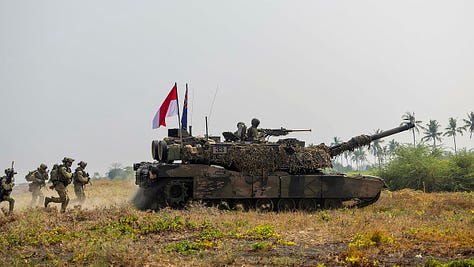
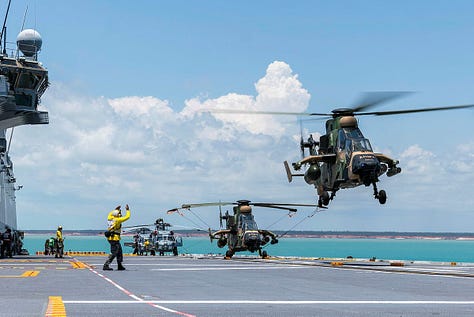

US-Japan-RoK exercise
This week, the U.S., Japan and South Korea also commenced exercise Freedom Edge, which is demonstrating air defense capabilities as well as the integration of 5th-gen fighters into a multi-domain warfighting construct.
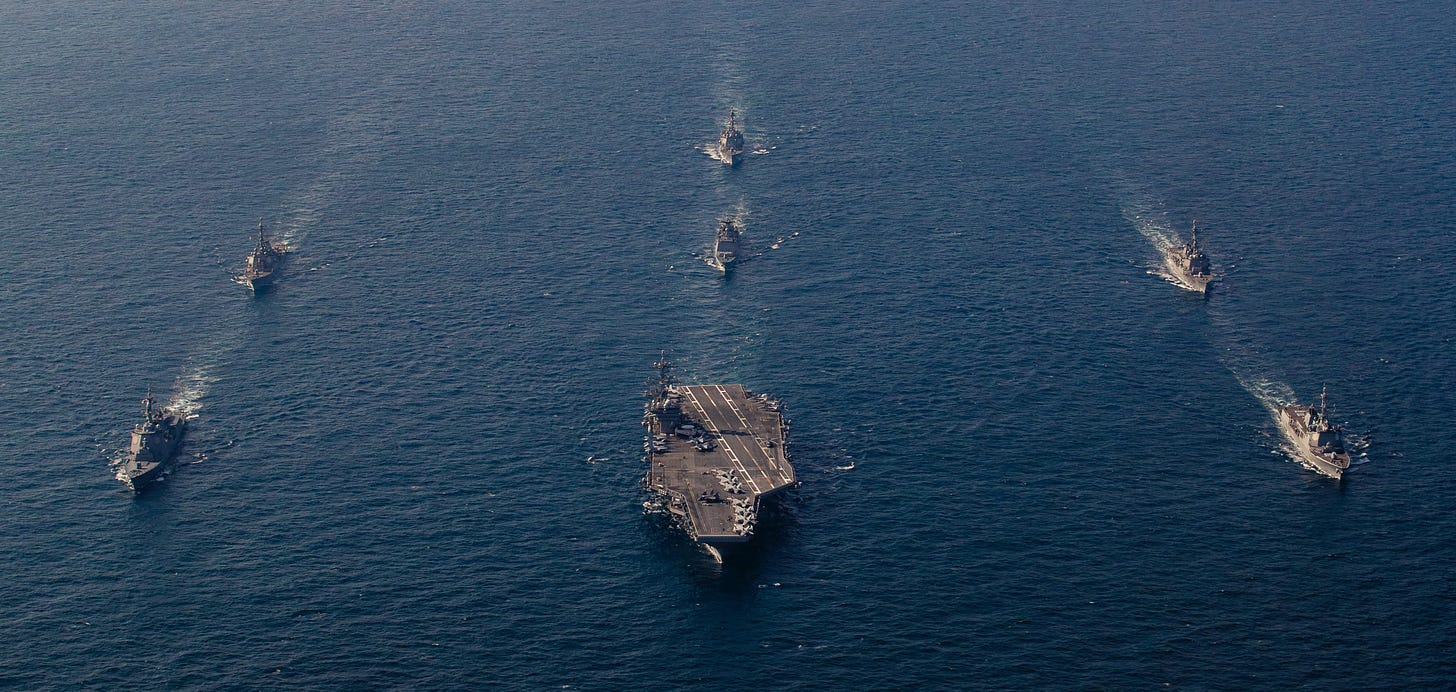
As a press released noted, “Freedom Edge continues to demonstrate the defensive posture & unbreakable will of Japan, the ROK, & the U.S. to promote trilateral multi-domain interoperability & to protect freedom for peace & stability in the Indo-Pacific, including the Korean Peninsula.”
Albo the Chinese Deputy Sheriff?
Finally in the Pacific this week, the Chinese media praised the Australian Prime Minister Anthony Albanese as a model for other leaders in the Pacific to emulate. While there will be some on the left of Australia politics who will be jumping for joy at such an endorsement, the reality is that it speaks poorly of the current Australian government’s embrace of China. Articles such as this are deliberately designed by the Chinese Communist Party to foster discord in the U.S.-Australia relationship as the Trump administration begins its transition into government in January 2025.
*****
Since my last Big Five post here, I have published a few articles. On 5 November I published a piece at the Lowy Institute that explored how the concept of victory remains relevant in modern warfare. I also published an article here that examined the potential components of any ‘peace plan’ for Ukraine. Finally, I published two articles that contained observations and reflections from my visit to Israel last week. You can read them here and here.
Two podcasts were released in the last couple of weeks where I was interviewed. First, I was interviewed by Eliot Cohen and Eric Edelman on their Shield of the Republic podcast. We discussed the war in Ukraine, and my new book, The War for Ukraine: Strategy and Adaptation Under Fire. Also, this week, the Special Competitive Studies Project (SCSP) released a podcast where I was interviewed about the war in Ukraine, and how military organisations can learn from the war, but also improve their own learning and adaptation systems.
This week I also gave presentations to the National Security College in Canberra (on Chinese learning and adaptation from the war in Ukraine) and the Indian Navy’s war college in Goa (on learning and adaptation in the war in Ukraine).
Finally, for those who weren’t aware, I have been posting on BlueSky more frequently (you can follow me here). I will retain a presence on both Twitter and BlueSky for the time being and post pretty much the same stuff on each. I have seen a drop off of followers on Twitter in the past couple of weeks (I am not the only one) and a big increase in BlueSky followers. For a long time there have been very good mil twitter, NATSEC and OSINT communities on Twitter. It would be nice to see these have an active presence on BlueSky as well.
*****
So, to the recommended readings…
This week, a mix of articles including a good exploration of Russia’s evolving tactics and campaign execution in eastern Ukraine from the relaunched Small Wars Journal. I have also included a great piece from Stacie Pettyjohn that looks at the Australia-U.S. alliance the China scenarios, an update on the war in the Middle East from Eliot Cohen, and a very interesting study from the Kiel Institute about the costs to Germany of supporting Ukraine now and the costs of a Russian victory. Finally, there is a piece on the potential national security implications of a Trump 2.0 presidency.
As always, if you only have time to read one article, the first one is my pick of the week.
Happy reading!
1. Russia’s Dobas Battering Ram
As I noted in my update, the Russians have continued to advance in eastern Ukraine. Their seizure of Ukrainian territory has accelerated in the last couple of months. It is an excellent, and quite detailed piece from the re-launched Small Wars Journal that explores how the Russians have learned and improved since the beginning of the war As the author notes: “Russian military strategy and tactics are gradually evolving after the setbacks of the first two years, progressing from the operational-tactical level to the operational level, and potentially toward a more cohesive operational-strategic level. This development presents a dangerous scenario for the future.” You can read the full article here.
2. China Scenarios for U.S.-Australia Collaboration
While AUKUS gets a lot of attention, the United States-Australia relationship is one that goes back to our battlefield exploits in the First and Second World Wars, the signing of the Anzus alliance in 1951, and our continuing close relationship fostered through exchanges, exercises, intelligence sharing, arms sales and technological collaboration. In this article, the author explores recent developments in the ever-closer military alliance between the United States and Australia. She then examines three hypothetical scenarios of Chinese aggression and proposes ways the U.S. and Australia can strengthen their collective response. You can read the full article here.
3. Pay Now or Pay Later
One of the truisms of national security affairs and human conflict is ‘pay now or pay later’. In essence, this means that a challenge left unaddressed now will probably get worse and therefore be more expensive to confront in the future. With that in mind, this new report from the Kiel Institute is quite timely. It examines the costs of Germany supporting Ukraine now (and now providing sufficient support) versus the future costs of a Russian victory. As the report finds, supporting a Ukrainian victory now is a much better investment, and much cheaper, for Germany. You can read the full report here. And, hat tip to Ulrike Franke (on BlueSky) for pointing me towards this.
4. The Israel-Iran War
Eliot Cohen, a friend who I accompanied on the recent trip to Israel, has produced his first article on our visit. His article explores how the focus of Israel’s military operations has shifted since our previous visit there in December 2023. Using his long standing relationships in the Israeli national security community as a foundation, this is a very good examination of how the Israeli’s are currently viewing their strategic threats and how to address them. You can read the article here.
5. The Implications of Trump Presidency
It has been hard to avoid the media commentary and online conversations about the implications of a Trump 2.0 presidency in the past ten days or so. The flurry of annoucements about his future administration have only intensified debate, expecially around some of the more controversial nominees. In this piece, the author argues that “When the rest of the world looks at Trump, they will no longer see an aberrant exception to American exceptionalism; they will see what America stands for in the twenty-first century.” While I am personally taking the view of ‘lets sit back and see what actually happens from January next year’, this article is one of many notable explorations of the coming four years published since the election of Trump. You can read the full piece here.



